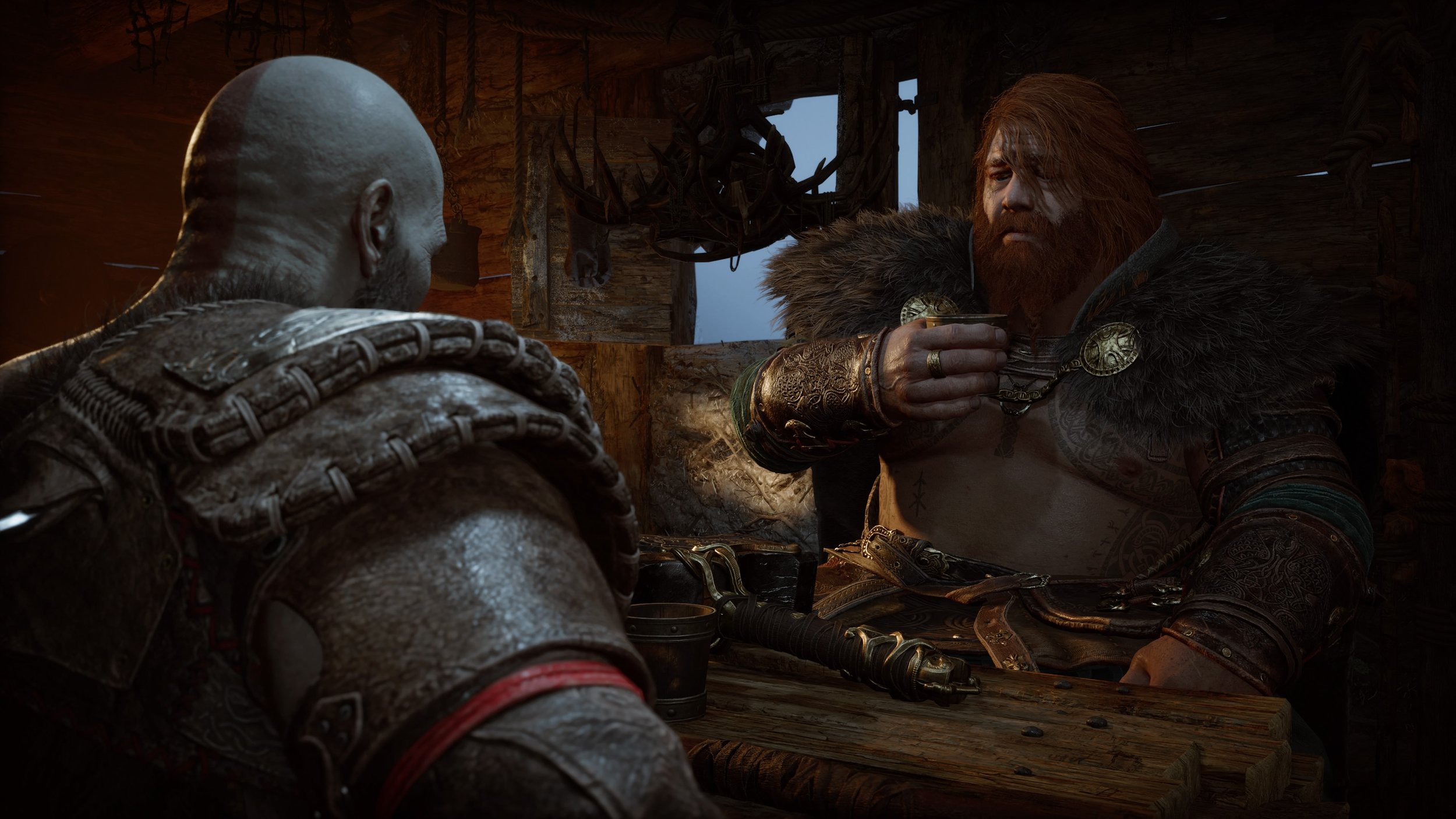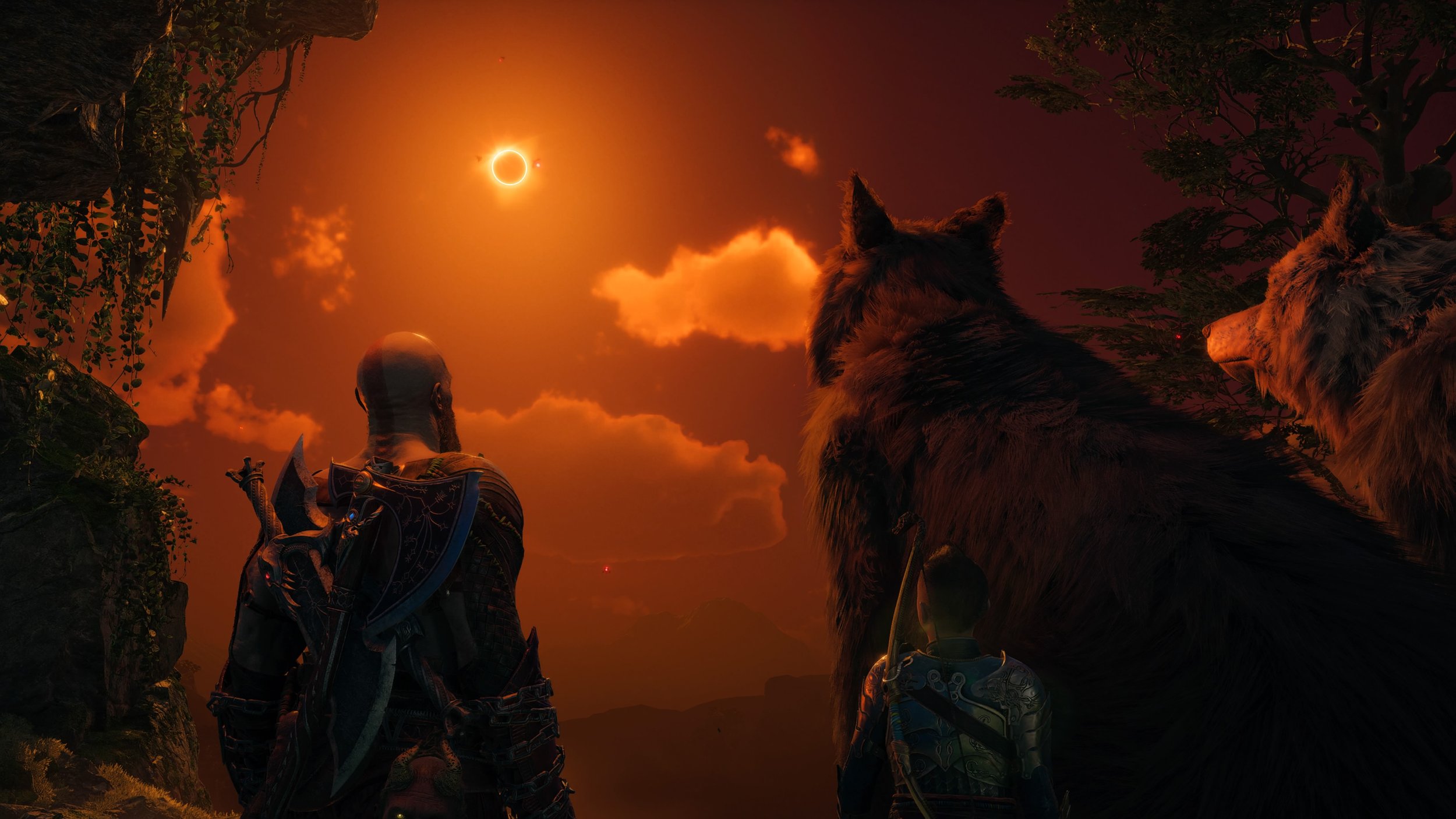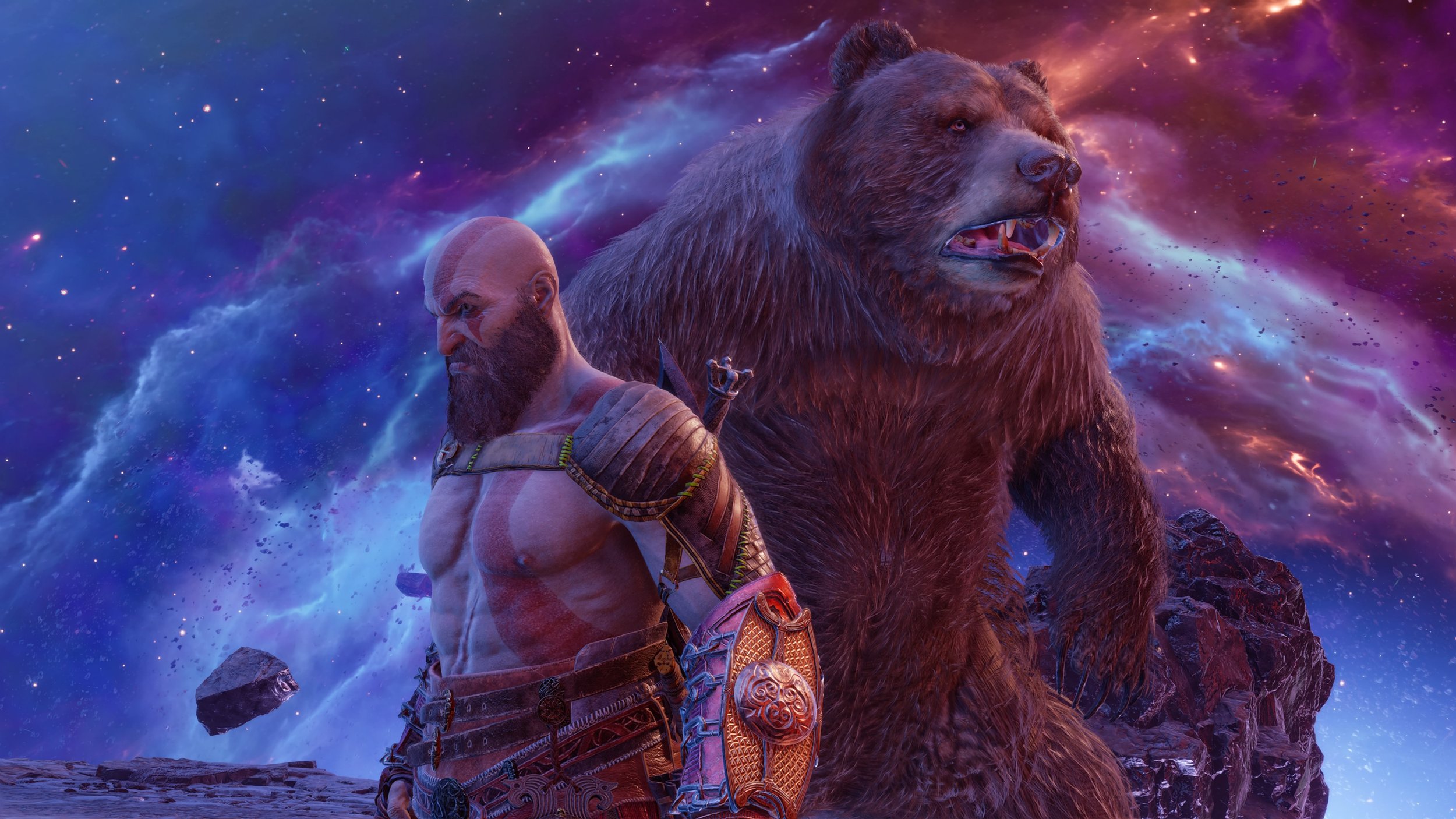God of War Ragnarök - Review

It was March 2007 and the PlayStation 3 had just launched in Australia. I went out and bought the $1000 model, which included PlayStation 2 support, and after getting through Resistance: Fall of Man, I wanted to play something new, so I turned to the PlayStation 2 and thought God of War looked interesting. It was that simple thought that spun up a love for the series, and my passion for Greek mythology didn’t hurt either. Then the series went away, and returned with the incredible God of War in 2018. Now we are back at it, four years later and on game number eight, does the series still have what it takes to impress?
The short answer is yes, the longer answer will take some explaining, but do not worry as this is a spoiler free review.
The story starts up a few years after the events of the last game, with Fimbulwinter now in effect. After completing a successful hunt Kratos and Atreus begin their journey back home, only to be attacked by Freya, who is seeking revenge for the death of her son Baldur. Making their way back inside their protective barrier, the pair begin to relax, only to have some crazy weather appear — and then Thor shows up. With Thor comes Odin and his proposal of an alliance of sorts; of course, Kratos is not one for working with Gods and refuses and thus an adventure is kicked off. I won’t say anything more on the story, nor which characters you will meet, that is all best to be discovered for yourself. What I will say though is that the game uses prophecy as means to either push events forward or attempt to subvert the aforementioned prophecy. There are times when it does get a little stuck around that concept, and I can understand relying on it occasionally, but it seems like more of a crutch here. With that reliance comes a set point of view for one character and each time they bring up using Odin to subvert things, everyone else tells them the same thing: Odin cannot be trusted. Given that this thread does run for a good number of hours, it can be a little hard to enjoy, but the game does thankfully move on. The ending of the story is quite satisfying and after the 23 hours it took me to finish the game, I really felt like it was time well spent.
When it comes to the gameplay on offer, a lot of it is going to feel very familiar to those who played the last game, because if it aint broke. Combat with the Leviathan Axe or the Blades of Chaos feels remarkably similar to the last game, but this time there are enhancements that you can use to add different effects to your attack. These effects are not colour sparks or other nonsense, but rather different finishers, like unleashing a wave of fire. During your adventure you will find more and more of these and you can equip them in a special amulet, something which is separate to your charms on each weapon. Speaking of them though, as you level up your weapons you can also unlock the ability to have different perks assigned to selected attacks. These allow you to customise your playstyle even more, so if you want to deal out damage you can opt for those, or balance things out with some healing options. Atreus can also be more useful in combat, thanks to the runes that get applied to his bow, the first one he picks up deals out damage. Those same attacks can be used against selected portions of the environment to unlock new paths or access secret spaces. The second rune amplifies the attacks that hit them but can also do the same out of combat. Learning how to use which attack, both in combat and out of it, will take some remembering, more so if you play the game like I did, with the HUD off.
When you first load into the game, you will be presented with a host of options for accessibility, some of these are pretty basic like subtitles. The game gives you an option to accept a quick setup, or you can go page by page. Those pages cover everything you can think of, colour overlays for enemies, friends and more, text size for subtitles, world prompt indicators and more. Each of the options, including the colour-blindness, doesn’t just give you one or two presets and lets that be it, no you have options galore. One such option is to turn the HUD off, which is not special to this game, but what was unique, is that you can assign accessibility functions to the touch pad. For me, that meant if I swiped up on it, the HUD would turn on or off and that let me enjoy the games visuals when I was exploring but have it back on when in combat. This wasn’t something that I turned on from the outset, but once I started exploring the larger worlds, I just wanted to enjoy them.
Speaking of those worlds, in the first game you could visit six of the nine realms, with Asgard being excluded, for obvious reasons. In this game, across the adventure all nine realms are up for exploration, and while some have more going on than others, they are all incredibly detailed. Midgard is still around, but with Fimbulwinter now in effect, the massive lake that acted as the central point is now frozen over, but it still offers plenty to see and do. One of the new realms that you can explore is Nidavellir — Marvel fans will know it as the birthplace of Thor’s hammer and the home of the Dwarves. That latter fact is still true here, but this time Thanos is not around to wipe them out, instead Odin has them living in fear and building weapons for him. That fear causes them to all run inside when Kratos and Atreus come calling, it also provides Sindri a chance to explain why they live away from them. The design of this world, at least when you see towns is very much old school England, lots of timber everywhere, but when you are out of town, it’s a lot of mountains and fields.
That juxtaposes against Vanaheimr, the home of Freya and her people, all of whom are rich with magic. The first visit here is for a reason I won’t spoil, but the return visits are exciting, as the game lets you control the time of day, so you can see the realm in both day and night. The entire world is teeming with plant life, most of it just looks great, but some of it is deadly and some reacts to the changing of the day. The result of all of it though, is a world that feels alive, even once you venture out to the northern part of the world and the trees start to fade away. Alfheim gets expanded upon this time as well, the temple from the first game is revisited, but the scope of the world is expanded so much, that you won’t believe the size. That is true with all but two of the realms, those other two are decent in size, but you don’t get free reign like the others. There are countless side quests that you can undertake in each realm and some of them will actually have you running all over the place to solve them. A few of these quests will take place over all the realms, giving you more reason to revisit them, not that you really need one.
I made a mention earlier that I turned off the HUD in order to enjoy the games’ vistas and other visuals and for one single reason, it is a stunning game. Kratos, Atreus, Sindri and all the other folks you meet all look amazing, but it is the world that makes the game something special. The opening moments have you speeding across Midgard, with the snow flying all around you, and the game only gets better from there. Each of the realms that you visit and the characters and creatures that you meet look extraordinary, there is no way to deny that. The story is told with such care, that when characters do things like give side eye or raising an eyebrow as if to question a statement, you can see it and connect with them all the more. All of those elements combined make this one of the most visually stunning games you will ever play, but there are a few things to note.
The game, at least for me ran at 60fps, as I had it in the performance mode and I did this, knowing how much better the combat is. The biggest issue that I found with this is that there were a host of animations, usually when Kratos was taking down an enemy, that just ran too fast. Its as if all of those take downs were animated to be shown at 30 frames per second, but with the game at 60, they just ran them faster. The effect was so jarring at times, especially with some of the larger creatures you can fight, that I often avoided triggering them. Across the board though, I also had lots of little issues, from the sky box flickering when leaving a building. World detail would clip between other aspects, usually in the loading breaks of the world. Plus there were times when the gear that Kratos was wearing would just clip through seats and what not. Do not misunderstand, these issues are something to be aware of, but they don’t hurt the game, they just exist within it.
On the sound side, once again the actors bringing the various characters to life have done an incredible job, with Christopher Judge once again providing depth to Kratos. Sunny Suljic is back as Atreus and as both the actor and the character have grown up, there is more to the character thanks to the older voice to it. Alastair Duncan, Danielle Bisutti, Adam J. Harrington and Robert Craighead all return to voice Mimir, Freya, Sindri and Brok, with each doing incredible work. The new additions to the cast are plentiful, but I will only talk about two, Ryan Hursts Thor and Richard Schiffs Odin. Some might know Hurst form Sons of Anarchy and while the man doesn’t have the build of the games Thor, he still fills the screen each time he is on it. Schiff on the other hand has such a successful career from The Good Doctor to Ballers and even The West Wing, that his presence dominates. The first time we meet the character of Odin, Schiff generates a threat to Kratos, without any violence or shouting, just a calm and easy voice, it is oddly chilling and beautiful.
The game features an incredible score, once again composed by the talented Bear McCreary, who has also done work for Marvel’s Agents of S.H.I.E.L.D, The Walking Dead and most recently The Lord of the Rings: Rings of Power. When you visit new locations the score changes, Svartalfheim has an especially creepy melody at times and that fits the world you are exploring. The familiar God of War melody first composed by Gerard K. Marino for the original game does pop up a few times here, of course as the newer version. Each time that melody kicks in, you know something extraordinary was going to happen, and for good reason, the soundtrack is just too incredible for it not to.
For all the good, there are some issues, there were a few times when lines or sound effects were not played and while they were minor, the worst was the mix. Sometimes when running around the world, characters speaking would often be hard to hear, so much so that I had to keep turning subtitles on, so I could catch the full conversation. I don’t know if it’s a setting I selected, my audio setup or the game, but it happened pretty consistently, so just be aware of that.
God of War Ragnarök is an extraordinary game, no questions about it. Is the game perfect? No, there are characters I want to slap, plus a number of visual and audio glitches, but none of that truly matters. I spent almost 23 hours getting through the story and completing a few side quests and I honestly couldn’t wait to get back to the game. From the moment you start with Kratos in the cave until the credits roll, the entire game draws you in and refuses to let go. I honestly didn’t think that they could make a better game than the 2018 God of War, but not only have they done that, they have raised the bar for the industry so much that this is going to be the standard from now on.
The Score
10
Review code provided by PlayStation
The Pros
+The story weaves an incredible tale that deserves to be experienced
+The returning characters and new, all feel real and connecting with them is quite easy
The Cons
-There are some animations that feel like they are playing too fast for the game
-Some audio can be hard to hear at times, which makes understanding some conversations quite challenging










